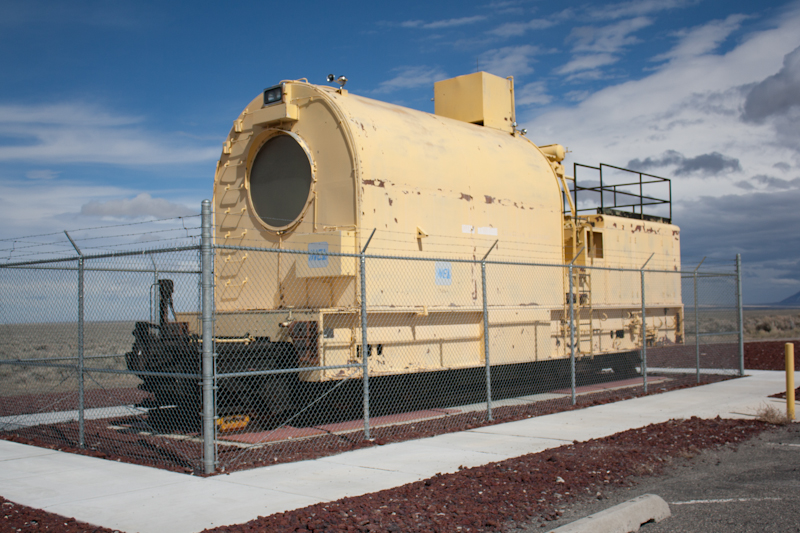Text: AAron Hutchins
Photo by: Alex Hutchins
Across a cold windswept east Idaho desert, people say you can hear the nuke train haulin’ its contaminated cargo. The short track rails start nowhere, and end nowhere. You might even see the sickly yellow locomotive yourself, if your lucky and don’t miss the turn off (for directions see earlier posting “Ancient Nuclear Powered Jet…”).
OK, so there’s no ghost train, but, in the middle of nowhere, along side the world’s first nuclear powered jet engine, sits an odd shaped yellow locomotive. It’s not nuclear powered, but it is lead lined, to protect the crew from radiation exposure when hauling the huge HTRE units that make up the nuclear jet engine.
General Electric, who ran the nuke jet project, had rail lines built to haul the huge engine from one test area to the next. In a 2005 document, the Department of Energy explained that “shielding” of various equipment from radiation, like the lead-lined locomotive, were based on 1950s understandings of radiation.
Two sets of tracks were laid for the program. The locomotive rode on the inner rails of the two tracks, pulling, or pushing the HTRE units. The HTRE units rode on both sets of tracks, they were that wide. (More pics in the “Galleries” section, click on the “INL Nuclear Power Site” pic. Click on the pics to make them bigger.).
The nuke train had a top speed of 3.5 miles per hour, but, for safety reasons traveled at 2.5 mph. For a detailed (and boring) explanation you can go to this website: www.inl.gov/technicalpublications/Documents/3028280.pdf Supposedly there are period photos in the document, but they didn’t show up for me.
The Idaho National Laboratory (INL) used to be known as INEEL, before that INEL, before that ERDA and before that NRTS. The names changes coincide with changes in government agencies controlling the “site”, in the early days, and changes in contractors who now run the site.
